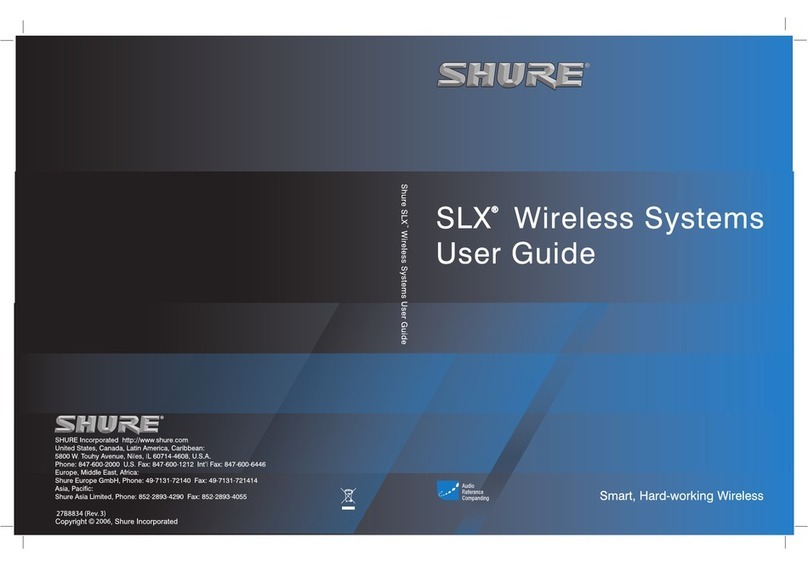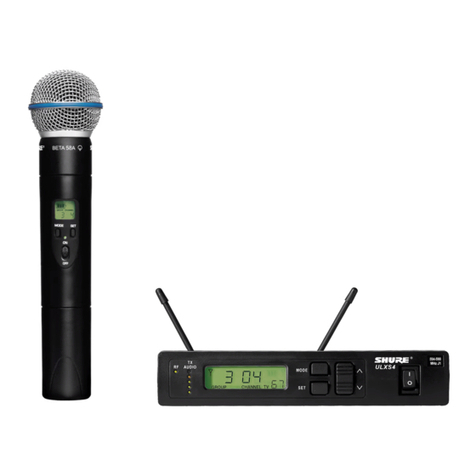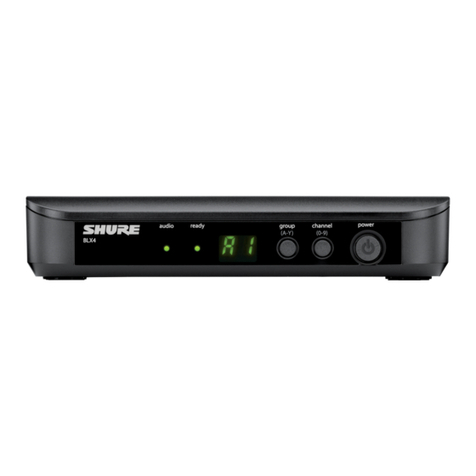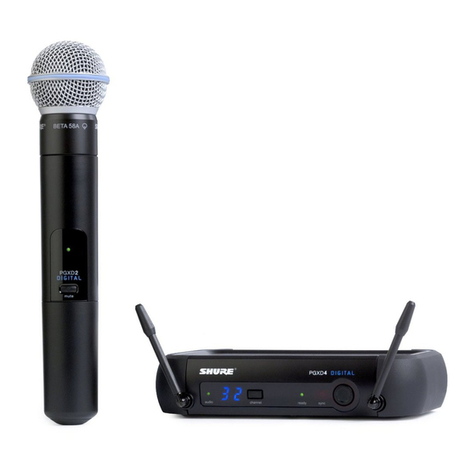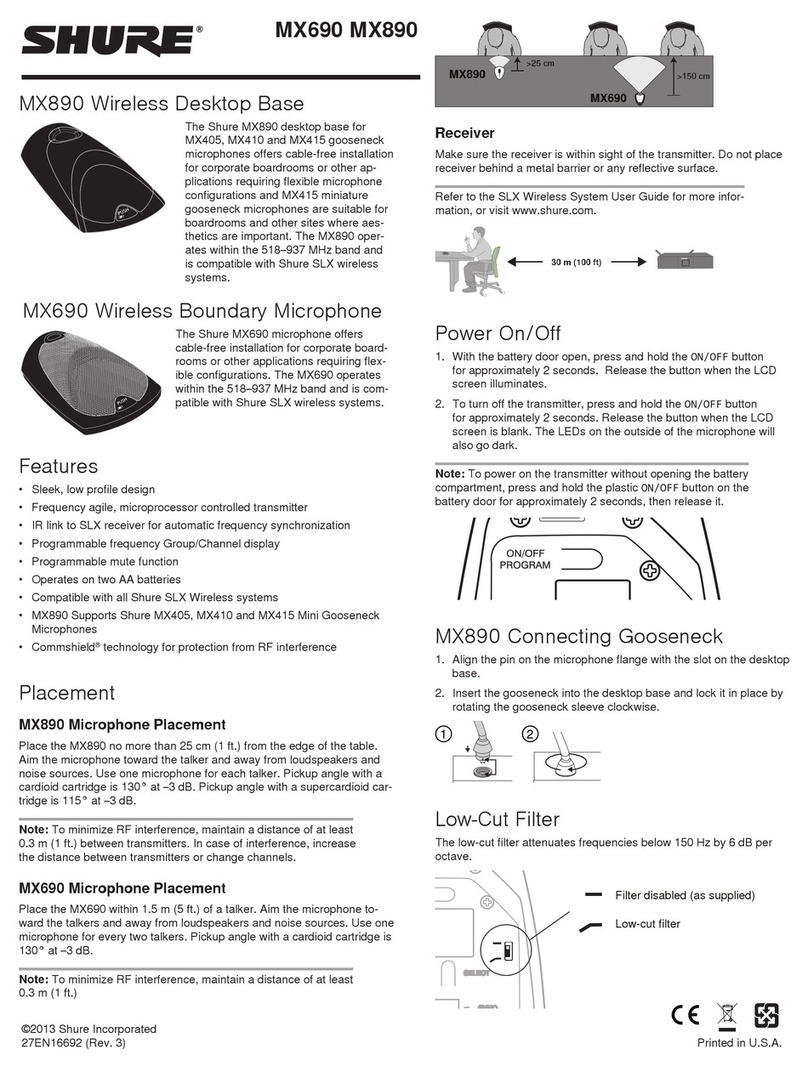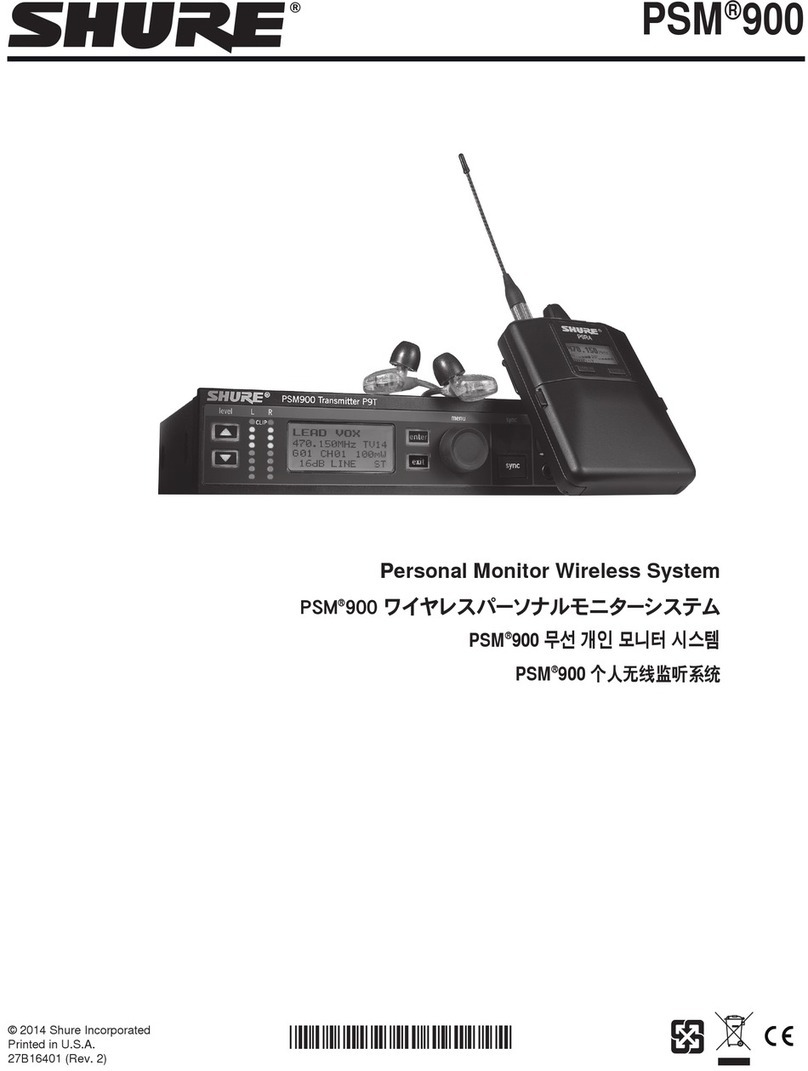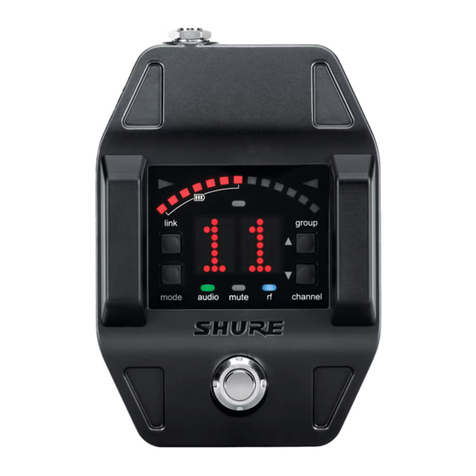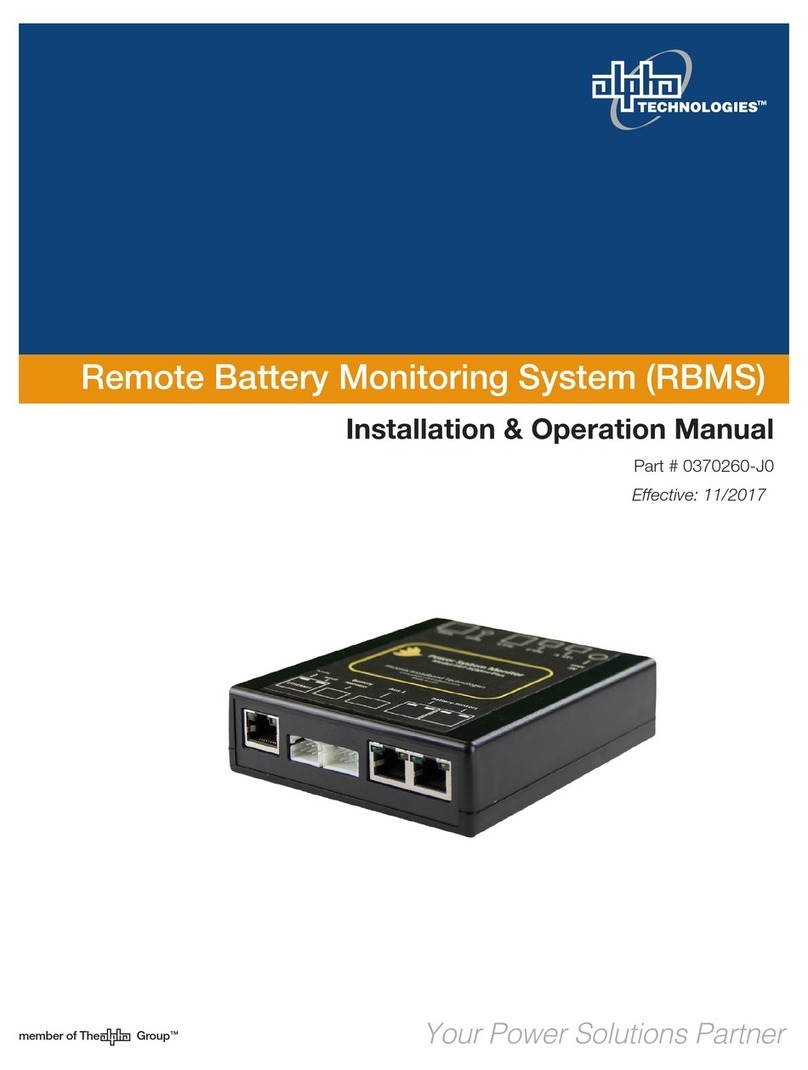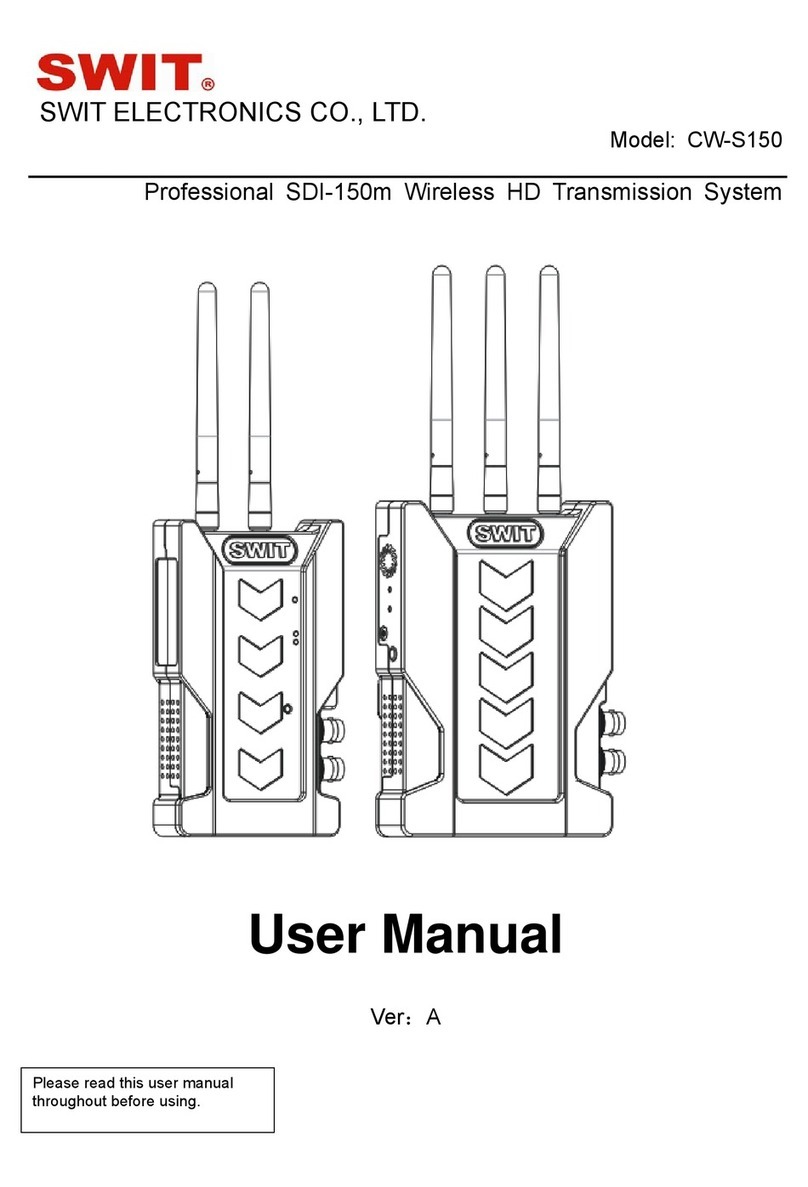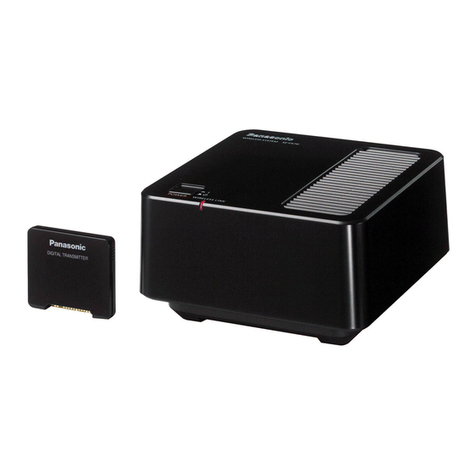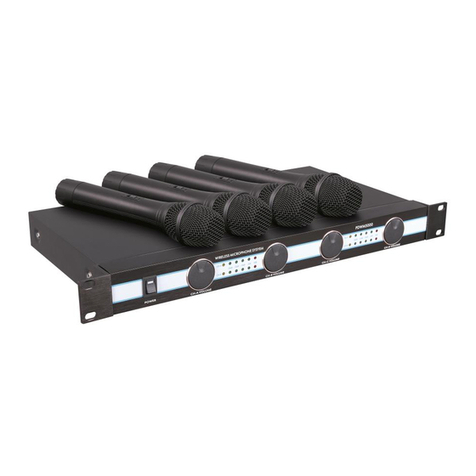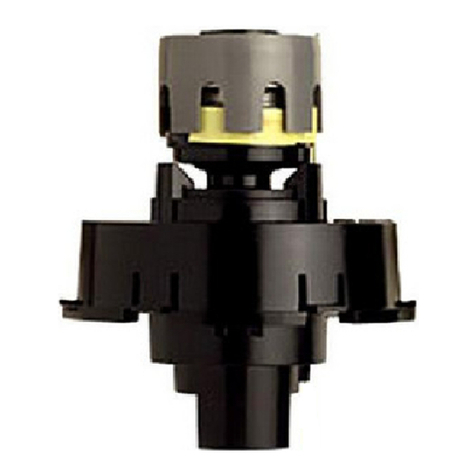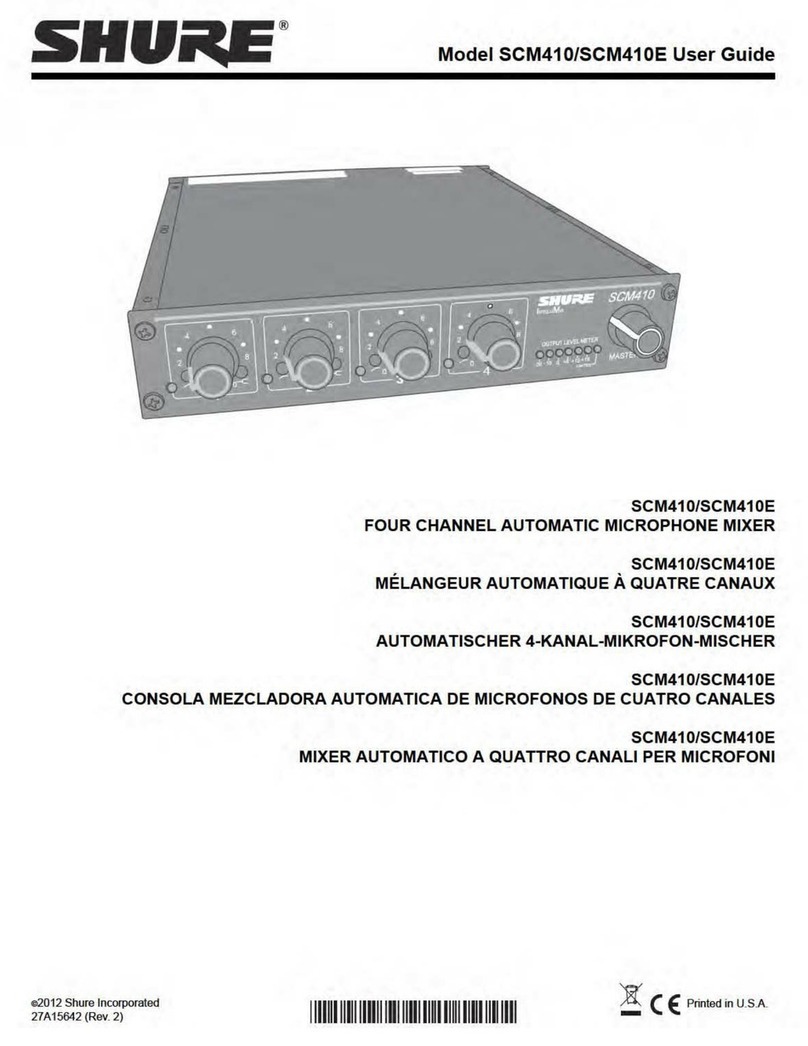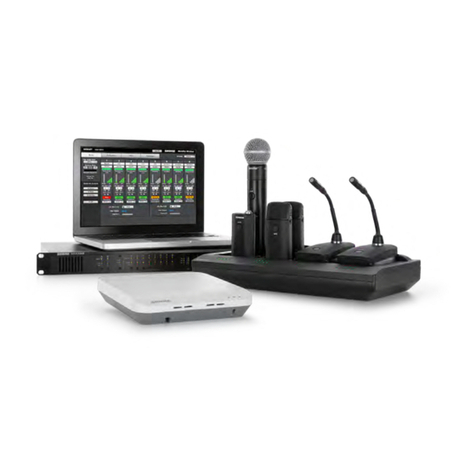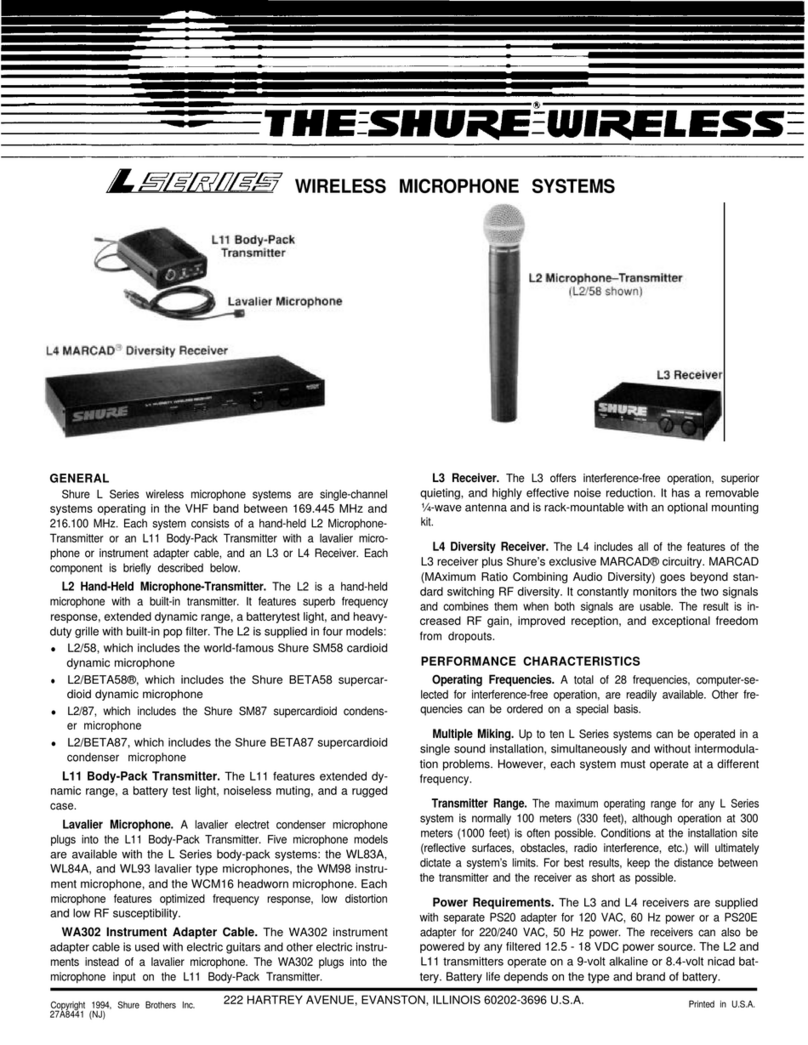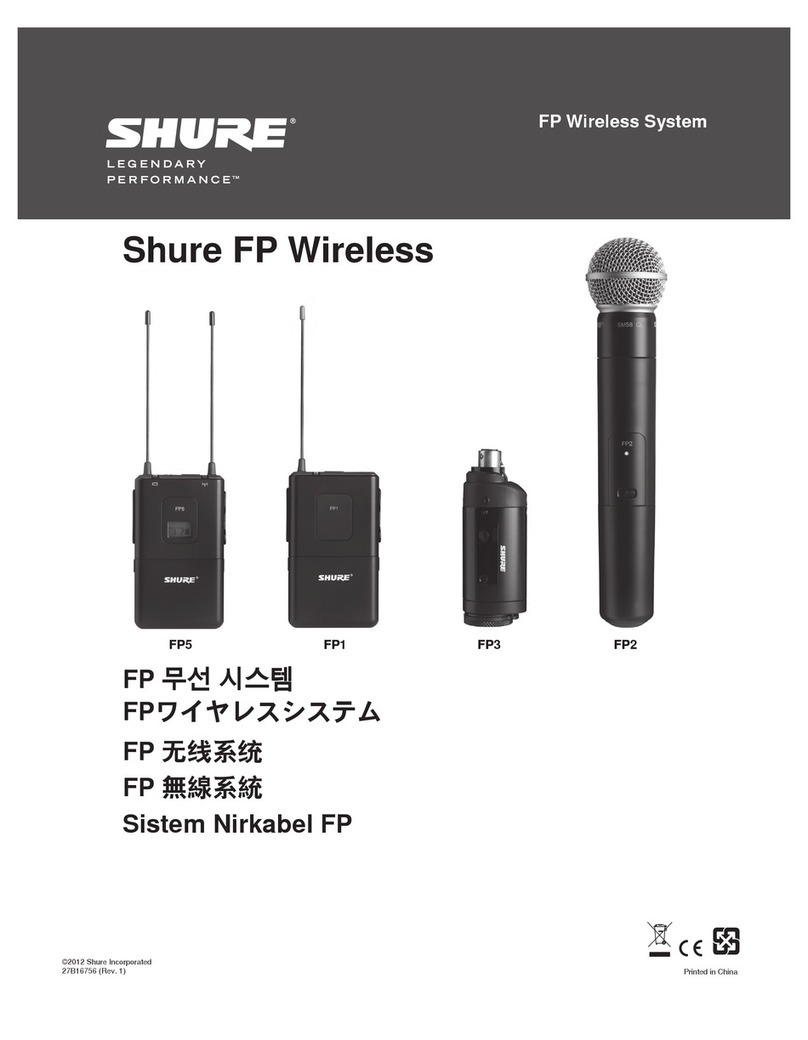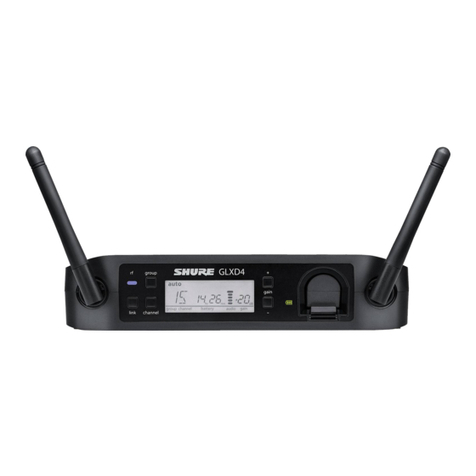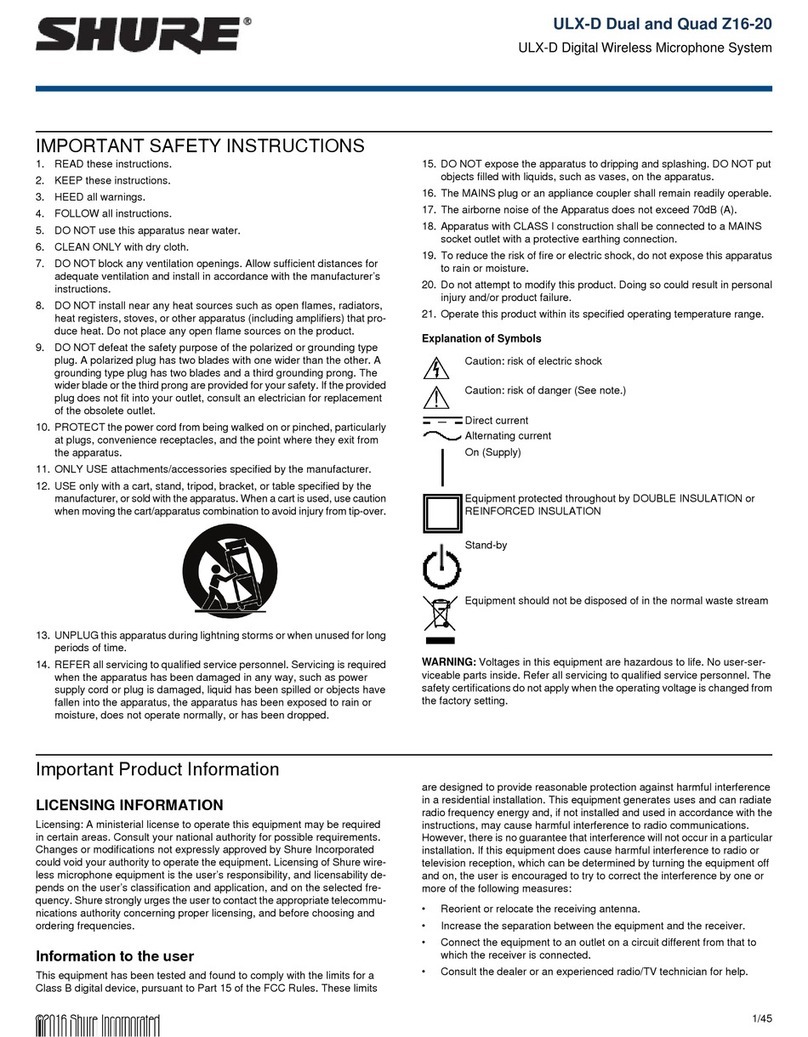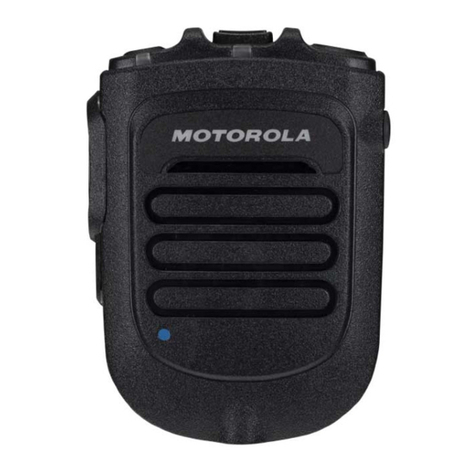English
1
READ ME FIRST!
To get your system up and running in just a few minutes, follow the simple in-
structions on this page. For more detailed information, refer to the sections of
this guide that apply to your system.
Receiver Connections
1. Attach the antennas to the receiver antenna connectors.
2. Connect the AC power adapter to the receiver power connector; then plug it into an
ac electrical outlet.
3. Connect the receiver audio output to the sound system, using either a low- or high-
impedance audio cable.
Transmitter Connections
1. Open the transmitter battery compartment and insert a fresh 9-volt alkaline
battery. Observe proper battery polarity ( “+/–”).
2. If you are using a body-pack transmitter, connect the microphone or WA302 instru-
ment cable to the 4-pin connector on the transmitter.
Operating the System
1. Press the receiver POWER switch. The green POWER light on the receiver
illuminates.
2. Set the transmitter PWR/OFF switch to PWR and the ON/MUTE switch to ON. One
of the three lights on the transmitter illuminates, indicating both that the transmitter
is on and the amount of battery life remaining. Two sets of five RF level lights on the
receiver will also glow to indicate the strength of the received signal. The more lights
glowing, the stronger the signal.
3. Have someone talk or sing into the microphone, or play the musical instrument con-
nected to the transmitter. The audio level will be indicated as follows:
-Green lights (3) glowing indicates normal operation.
-Amber light glowing indicates approaching audio overload (should only occur
during loud signals).
-Red light glowing steadily indicates audio overload. If this happens, reduce the
transmitter gain until it flickers only during the loudest signals. Refer to the Trans-
mitter Audio Gain Adjustment section of this guide.
4. Adjust the receiver LEVEL control until the output level is compatible with the mixer
or amplifier input. In most cases, this control should be set fully clockwise.
YOU ARE NOW READY TO PERFORM!
IMPORTANT:Every wireless microphone installation is a unique situation, and can
present a variety of problems. Never attempt a live performance without first conduct-
ing a “walkthrough” test of the system in the performing area. If major changes (addi-
tional wireless systems or intercoms, relocation of scenery, etc.) have been made
since the last walk–through test, check the wireless system again—as close to perfor-
mance time as possible.
